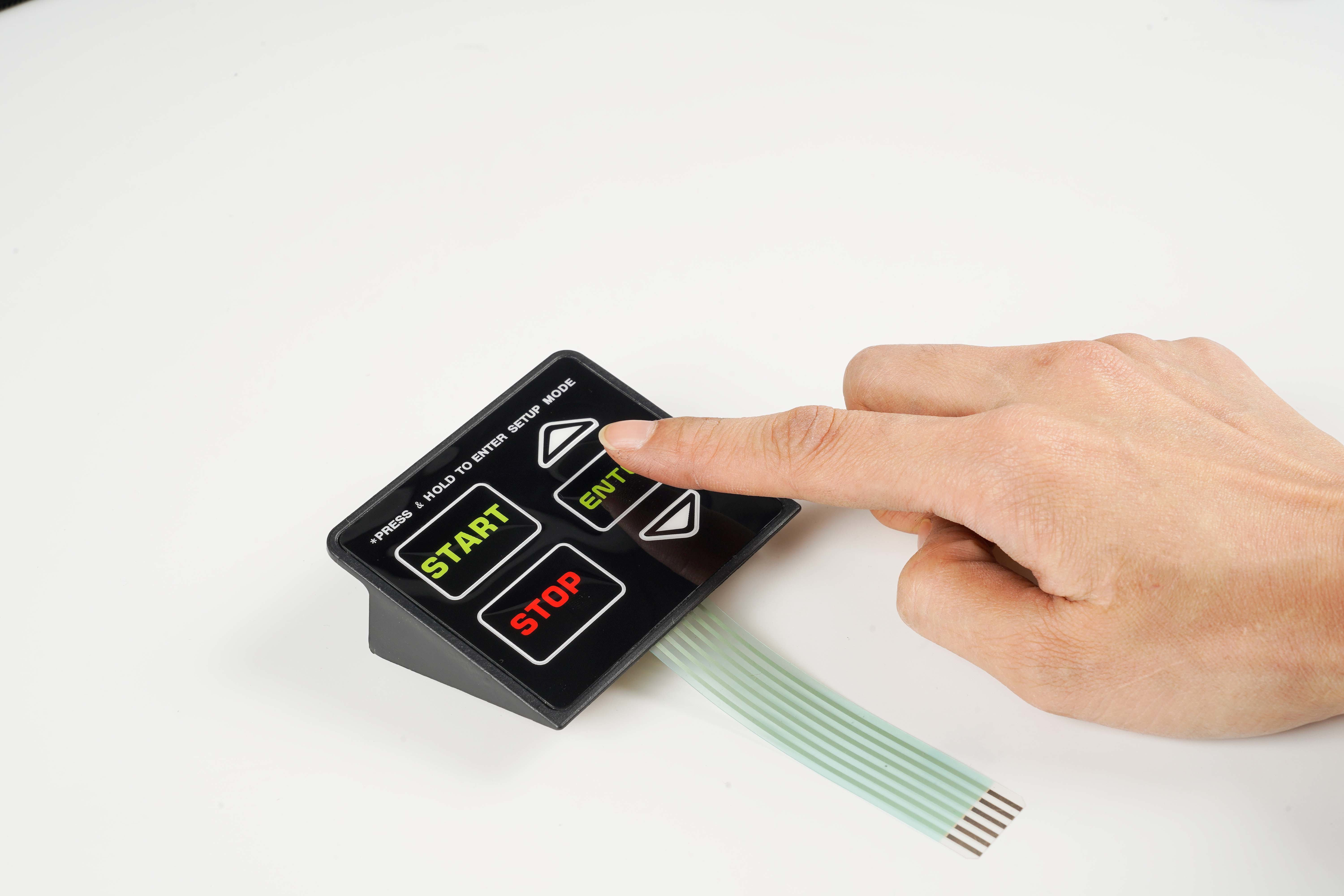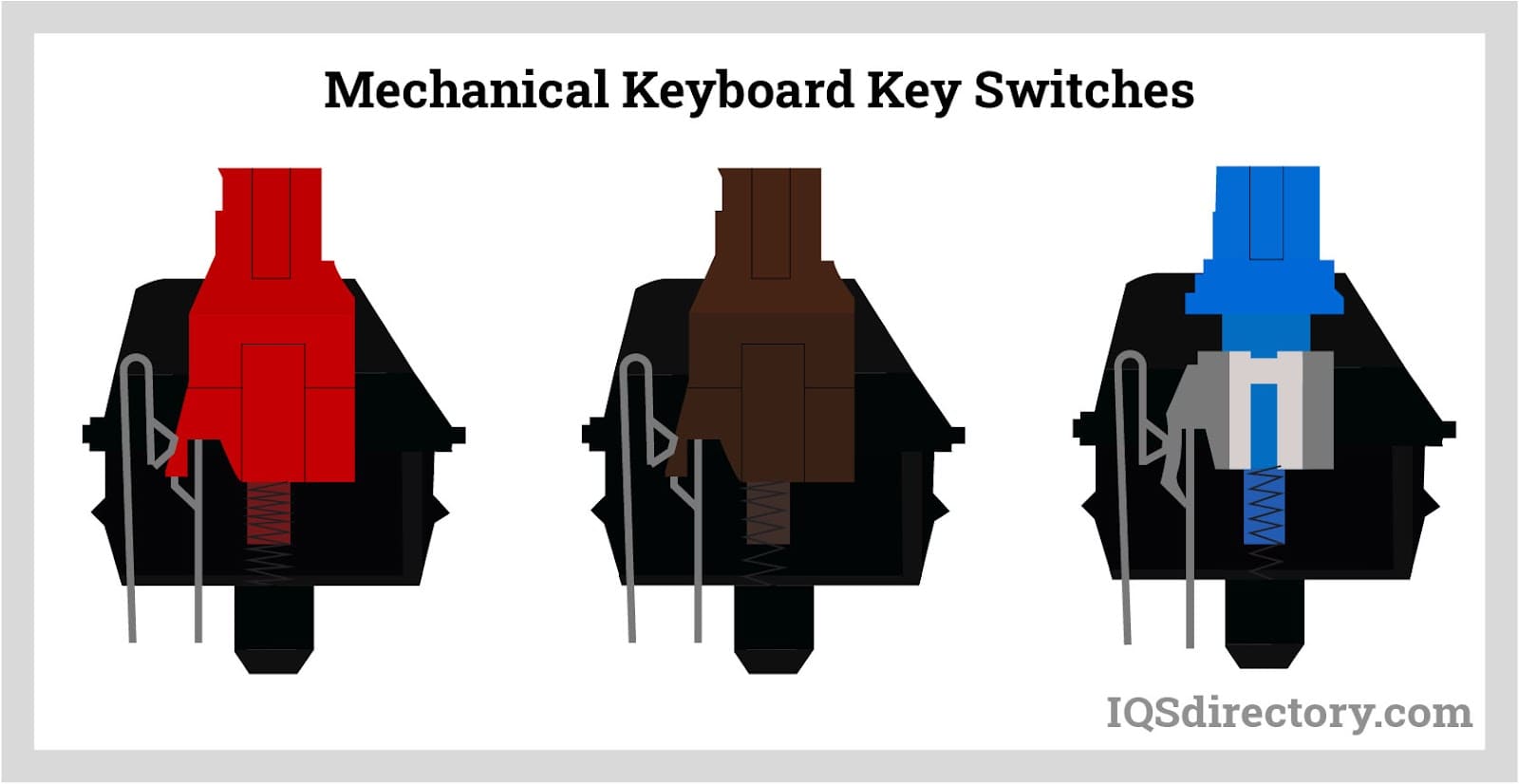Why membrane switch technology are transforming the landscape of healthcare equipment
Everything About Membrane layer Change: A Comprehensive Overview for Beginners
Membrane buttons are crucial elements in modern-day electronics, offering a special interface for individual interaction - membrane switch. Their split construction, consisting of overlays and conductive traces, provides performance and resilience. Unlike typical mechanical switches, membrane layer switches provide a streamlined style and personalized choices. Recognizing their essential attributes and benefits can transform item design. The intricacies of their application and style factors to consider warrant additional expedition.
What Is a Membrane layer Switch?
A membrane button is a type of electric button that contains a versatile membrane layer layered over a published circuit board. This style enables a compact and smooth user interface, usually utilized in various electronic gadgets. Membrane layer buttons are frequently found in consumer appliances, medical devices, and industrial machinery as a result of their durability and resistance to environmental factors.The building usually consists of numerous layers, such as visuals overlays and glue support, which give responsive responses and shield the wiring below. The procedure of a membrane layer button is launched when stress is used to the surface, completing an electrical circuit.These switches are valued for their flexibility, enabling customized designs and printed graphics that provide to details interface. Their inconspicuous nature minimizes area demands, making them suitable for applications where standard switches may not fit. On the whole, membrane layer buttons provide a practical and aesthetic option for contemporary electronic tools.
Trick Parts of Membrane Layer Changes
Membrane switches over make up a number of essential components that add to their capability and efficiency. The top layer, referred to as the overlay, gives the individual interface and is typically printed with graphics or icons. Beneath the overlay exists a spacer layer, which separates the conductive components and stops unintended activation. The following crucial component is the visuals layer, which enhances aesthetic appeals and guarantees the longevity of the design.Conductive traces, normally made from materials like silver or carbon, are published on the circuit layer. When pressure is related to the overlay, these traces come into call, completing the circuit. In addition, a backing layer supplies structural assistance and can be made from materials such as polyester or polycarbonate. Together, these parts create a reliable, easy to use user interface appropriate for numerous applications, from home devices to industrial devices. Recognizing these elements is necessary for anyone thinking about membrane layer switch innovation.
Just How Membrane Changes Job
Recognizing how membrane switches over feature is important for valuing their prevalent usage in various gadgets. A membrane layer button operates via a series of layers, including a graphic overlay, spacer, and a circuit layer. When pressure is used to the overlay, it presses the spacer layer, allowing the circuit layer to make contact and complete an electrical circuit. This activity sends out a signal to the tool, motivating a response, such as activating a light or triggering a function.Membrane switches over can be made with numerous attributes, including tactile responses, backlighting, and custom graphics, enhancing user interaction. Their building enables for a closed style, securing the interior elements from dust, wetness, and pollutants. This toughness makes them ideal for varied applications, from customer electronics to industrial equipment. In general, the simplicity and effectiveness of membrane layer switches over add to their appeal in contemporary technology.
Advantages of Membrane Layer Switches Mechanical Buttons
While mechanical switches have long been a staple in many tools, membrane layer changes offer distinct benefits that make them significantly appealing. One considerable benefit is their slim profile, permitting for even more small designs and better adaptability in product development. In addition, membrane layer switches attribute a consistent surface, which enhances visual appeal and streamlines cleansing, making them ideal for settings where hygiene is critical.Another benefit is their resistance to dust and dampness. Unlike mechanical buttons, which can be compromised by environmental aspects, membrane buttons supply a sealed interface that shields against contaminants - membrane switch. Moreover, membrane layer switches typically have a longer life-span because of less moving components, leading to enhanced longevity and reliability.Cost-effectiveness is likewise a notable advantage, as membrane switches can be generated wholesale with reduced production expenses. These elements incorporate to position membrane switches as a sensible alternative to standard mechanical alternatives in various applications
Typical Applications of Membrane Layer Switches
Membrane buttons are extensively used in different fields, particularly in consumer electronics and commercial control board. In consumer devices, they supply a streamlined, user-friendly interface, while in industrial settings, they improve longevity and functionality. Comprehending these applications highlights the adaptability and usefulness of membrane layer buttons in modern technology.
Consumer Electronics Gadgets
As consumer electronics remain to progress, membrane layer switches have actually ended up being a preferred selection for a selection of tools as a result of their versatility and sleek design. These switches are commonly found in smartphones, tablet computers, and remote controls, where space is minimal and aesthetic appeals matter. Their low profile and customizable designs permit suppliers to develop easy to use interfaces that enhance the overall customer experience. Furthermore, membrane switches are often made use of in devices such as microwaves and coffee manufacturers, offering intuitive control options while standing up to wetness and dust. The durability and integrity of membrane layer switches make them ideal for day-to-day consumer items, making certain durability and consistent efficiency. In general, their integration in customer electronics reflects a mix of functionality and modern-day style.
Industrial Control Panels
The applications of membrane layer changes extend past consumer electronic devices, finding substantial use in commercial control panels. These buttons are favored for their durability and resistance to rough atmospheres, making them ideal for producing and process control setups. They supply a trusted user interface for drivers to regulate equipment, screen processes, and adjust setups. Membrane buttons can be customized to suit certain operational requirements, including functions like backlighting and responsive responses, boosting individual experience. Their inconspicuous design permits assimilation right into various equipment, while their description capacity to stand up to spills, dirt, and extreme temperatures warranties long life. In general, membrane layer buttons contribute to effective and secure operation in commercial applications, showing their versatility and efficiency popular settings.
Factors To Consider for Designing Membrane Changes
When creating membrane layer buttons, picking the right materials is necessary to assure sturdiness and performance. find here In addition, recognizing layer arrangement strategies can significantly influence the button's efficiency and customer experience. These factors to consider play a vital duty in developing reliable and effective membrane button styles.
Material Selection Importance
Material option plays an essential role in the layout and capability of membrane layer switches. The chosen materials straight impact the switch's sturdiness, tactile response, and total visual. Secret considerations consist of the substratum, which need to supply structural integrity while allowing for adaptability, and the visuals overlay, which needs to be immune to put on and ecological elements. Conductive materials ought to guarantee dependable electric efficiency, while adhesives have to supply strong bonding without compromising the button's operation. Additionally, compatibility with making processes and end-user environments is essential; materials must hold up against differing temperatures, moisture levels, and chemical direct exposure. Ultimately, ideal material option not just enhances the membrane layer button's performance but likewise contributes to its long life and user satisfaction, making it an essential element of the layout process.

Layer Setup Strategies

Often Asked Inquiries
For How Long Do Membrane Changes Typically Last?
Membrane layer switches normally have a life-span of 1 to 5 million cycles, depending upon use and ecological conditions. Aspects such as layout quality and operating regularity greatly influence their toughness and overall performance durability.

Can Membrane Layer Switches Over Be Personalized for Details Layouts?
Membrane layer switches can indeed be personalized to suit particular layouts, enabling varied forms, colors, and performances. This convenience allows producers to tailor these buttons to meet unique visual and operational needs successfully.
What Materials Are Made Use Of in Membrane Switch Building And Construction?
Membrane layer switches are commonly built making use of materials such as polyester, see page polycarbonate, and glue layers. These materials offer versatility, toughness, and resistance to environmental elements, making sure the buttons operate properly in numerous applications and problems.
Are Membrane Switches Resistant or waterproof to Moisture?
Membrane layer buttons can be created to be moisture-resistant, utilizing specialized products and finishes. Their water-proof capabilities depend on building and construction quality and certain applications, making it necessary to evaluate needs for perfect performance in different settings.
Just How Are Membrane Layer Switches Over Fixed if Harmed?
Fixing damaged membrane switches over typically entails changing the impacted layer or circuit. Service technicians might likewise apply conductive glue or make use of specialized repair service sets, guaranteeing functionality is recovered without full replacement of the entire button assembly. Unlike traditional mechanical buttons, membrane layer buttons provide a streamlined style and customizable options. A membrane layer switch is a kind of electrical switch that is composed of an adaptable membrane layered over a printed circuit board. The procedure of a membrane button is started when pressure is used to the surface, finishing an electrical circuit.These buttons are valued for their adaptability, allowing custom styles and printed graphics that provide to specific individual interfaces. While mechanical switches have actually long been a staple in many gadgets, membrane changes deal unique benefits that make them progressively appealing. Membrane layer switches commonly have a longer lifespan due to less relocating parts, resulting in boosted sturdiness and reliability.Cost-effectiveness is also a remarkable benefit, as membrane buttons can be produced in bulk with reduced manufacturing costs.